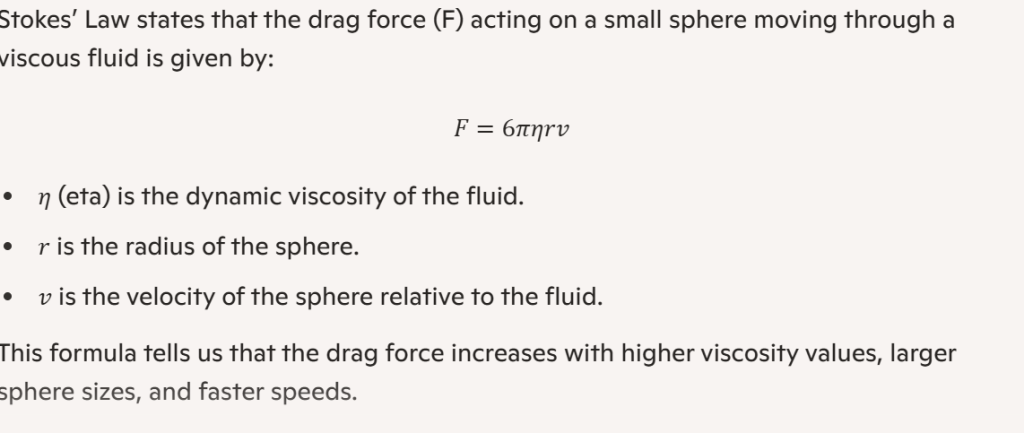In Class 11 physics, fluid mechanics introduces us to the behavior of objects moving through fluids. One of the key concepts in this area is Stokes’ Law. This law explains the resistive (drag) force experienced by small spherical objects as they move slowly through a viscous fluid. Whether you’re studying for an exam or deepening your understanding of fluid dynamics, Stokes’ Law is a fundamental principle that you can apply to numerous practical scenarios.
Defining Stokes’ Law

Explaining the Concept
Imagine dropping a small steel ball into a jar of honey. As the ball descends, the honey resists its motion with a force that slows the ball down. Stokes’ Law quantifies this resistance by linking the drag force directly to parameters like the ball’s size, its speed, and the honey’s thickness (viscosity).
Read More How Many Students Take Drop For NEET Every Year
Derivation Basics
A full derivation of Stokes’ Law involves solving the Navier–Stokes equations under conditions where the flow around the object is smooth (laminar) and the Reynolds number (a measure of the ratio of inertial to viscous forces) is very low. In this scenario, the inertial forces are negligible compared to the viscous forces, simplifying the equations to yield a linear relationship between drag force and velocity.
Conditions for Applicability
For Stokes’ Law to be valid, certain conditions must be met:
- Laminar Flow: The fluid must move smoothly around the object without turbulence. This is typically true for small spheres moving at low speeds.
- Spherical Shape: The object should be nearly spherical, ensuring that the flow around it remains consistent with the assumptions made during derivation.
- Low Reynolds Number: The law applies when the Reynolds number is much less than 1. This criteria confirms that viscous forces significantly outweigh inertial forces, maintaining a predictable, laminar flow.
Applications and Significance
Stokes’ Law has several practical applications:
- Determining Terminal Velocity: As an object falls through a fluid, it eventually reaches a constant speed when the gravitational force equals the drag force. Stokes’ Law is used to derive the formula for terminal velocity.
- Measuring Fluid Viscosity: In a falling ball viscometer, by determining the terminal velocity of a sphere of known size and density, scientists can calculate the viscosity of the fluid.
- Environmental and Industrial Uses: The law is instrumental in understanding processes such as sedimentation, where it helps predict how particles settle in liquids. In meteorology, for instance, it aids in studying the fall rates of raindrops.
Conclusion
Stokes’ Law is much more than just a formula—it’s a gateway into the world of fluid dynamics. By linking the drag force to viscosity, object size, and speed, it provides a clear, quantitative understanding of how fluids resist motion. For Class 11 students, mastering Stokes’ Law lays a strong foundation for both higher studies in physics and practical applications in engineering and science. With this clear understanding, you’re now better equipped to approach problems involving viscous forces and can confidently apply the concept in academic and real-world scenarios.




